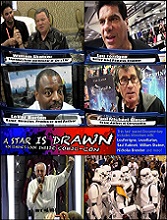This year China became the world’s second-largest economy. Experts are currently arguing over when China will overtake the United States as the world’s largest. Most predictions place that event between 2020 and 2027. The good news has been that the manufacturing juggernaut our own consumer markets largely created still depends on us for the development of new products, processes and technology. According to recent studies, however, this should not be taken for granted.
We now live in a truly global economy where it is not unusual to work alongside people in other countries. Labor off-shoring has moved beyond manufacturing and customer service support, extending to value-added research and development activities. This means we are not losing jobs just for our unskilled labor force, but for our higher-paid, more-educated workforce as well.
The R&D tax credit is a highly effective targeted tax incentive that helps drive the global competitive edge that we need. President Obama is set today in Chicago to again propose making the research credit permanent along with increasing its value, costing approximately $100 billion over the next 10 years (see fact sheet provided on the White House Web site).
Although the program has been around for 30 years and enjoys bi-partisan legislative support, it has yet to be made permanent. The R&D credit has expired numerous times before being retroactively renewed. It has even lapsed for one year. The 2010 tax credit, widely expected to be renewed, has yet to be passed by Congress. The uncertainty of the credit restricts new projects, limits opportunities and curtails high-value job growth.
The other problem is that our R&D tax incentive lags behind other countries. According to a report by the Information Technology and Innovation Foundation, a non-partisan think tank, we are now ranked number 17 out of the top 30 OECD countries. That’s right. You will find us below China, India, Canada, Mexico, Japan, Korea, Spain, France and others. (We were No. 1 as recently as the 1990s.)
Besides contributing to global competitiveness, the return on investment is substantial. The R&D credit currently costs an estimated $7 billion a year, which is very little given its impact on the economy. A permanent credit coupled with just a 25 percent increase could boost real GDP by $206.3 billion, generate 270,000 manufacturing jobs and raise total employment by 510,000 within a decade, according to a 2010 report by the Milken Institute.
One of the great things about the R&D credit is that it does not discriminate. Companies of all sizes, from small businesses to Fortune 500, qualify. A research study performed by The Tax Credit Company of IRS data shows that although large corporations claim the majority of credits, the relative impact on small to mid-size businesses as a share of their total assets is significantly greater.
Bottom line: Strengthening the R&D credit is something all sides agree on. It is a priority for our economic future at one of the most uncertain times in our history. It’s time to put questions about the future availability of the credit to rest so that companies will stop discounting its value, take full advantage of it as a key driver of innovation and assure that the U.S. remains the world’s leader in research and development.
Brandon Edwards is president of The Tax Credit Company, which represents Fortune 500 companies, and small and midsize companies in maximizing the value of tax incentive programs.
More about the R&D Credit:
R&D Tax Credit Update: http://www.researchcreditupdate.com
R&D Credit Coalition: http://www.investinamericasfuture.org/
IRS: http://www.irs.gov/businesses/article/0,,id=101382,00.html
Read more: Technology and Innovation Foundation, R&D Credit Coalition, Milken Institute, Small Business, Fortune 500, Congress, Research and Development Credit, Irs, Research, R&D Credit, Mexico, President Obama, R&D Tax Credit Update, Canada, Permanent Credit, Obama, Tax Credit, Tax Credit Company, Japan, France, Korea, Research and Development, India, Spain, China, R&D, Politics News



